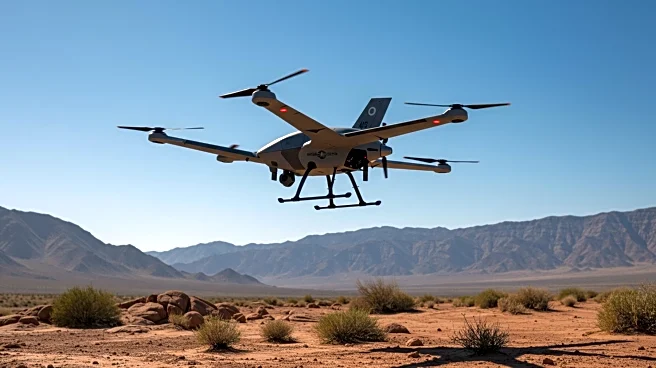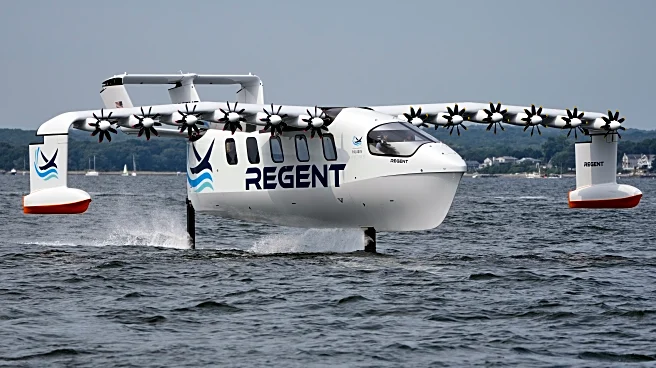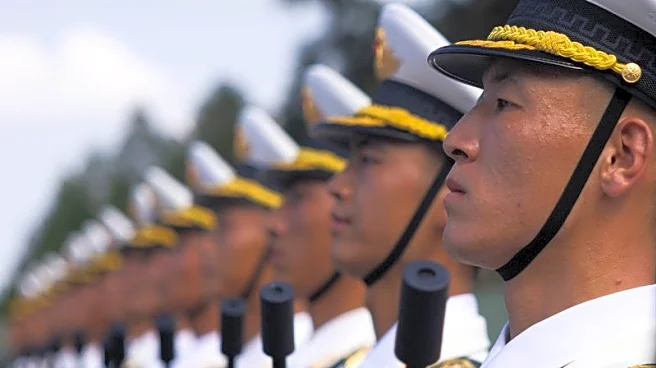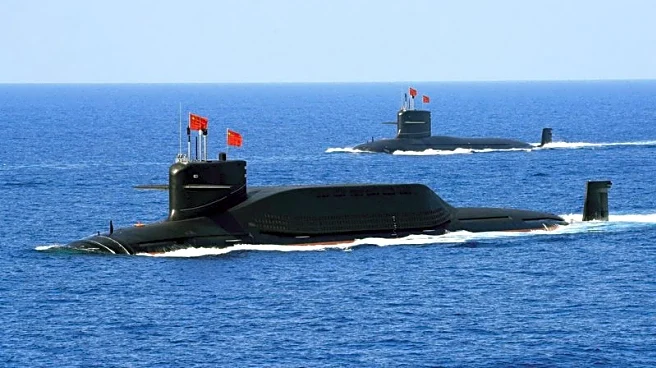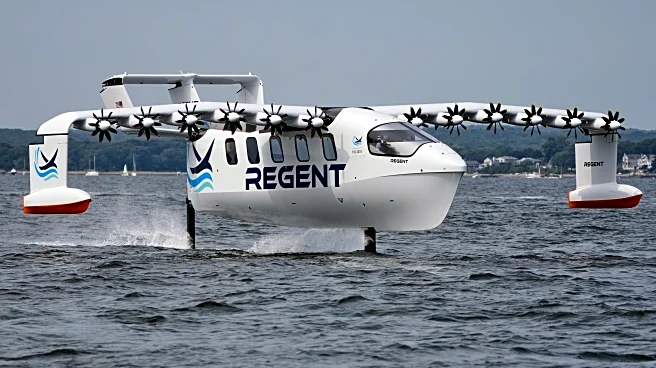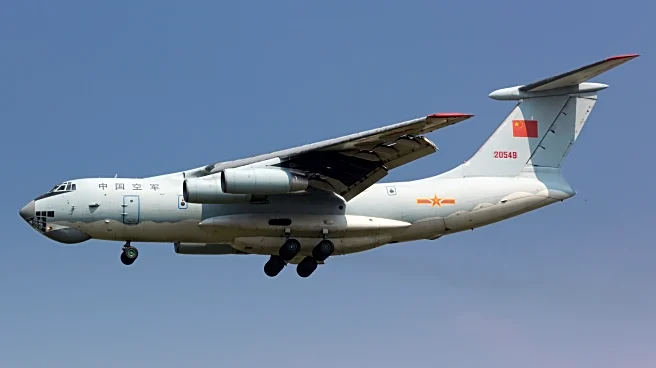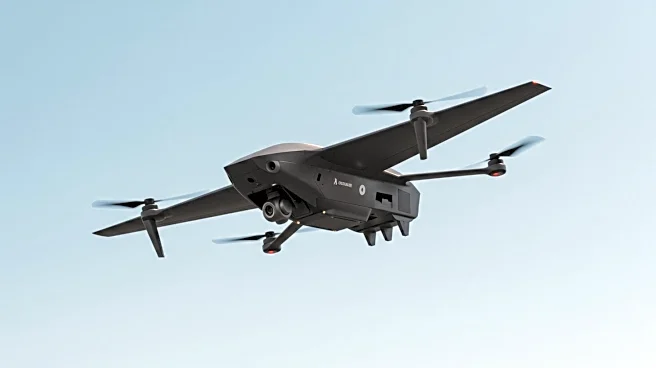What's Happening?
A new image from China has surfaced, showing a tailless unmanned air vehicle (UAV) with a high aspect ratio, suggesting advanced military capabilities. The UAV, tentatively labeled WZ-X, resembles the USA's secretive Northrop Grumman RQ-180, known for its intelligence, surveillance, reconnaissance, electronic warfare, and communications relay missions. The photograph shows the UAV with landing gear deployed and visible control surfaces, indicating a design optimized for high-altitude flight. This development aligns with China's focus on integrating sensor platforms with units capable of conducting kinetic strikes, enhancing their military kill chains. The image's provenance remains uncertain, typical of material appearing on Chinese social media. Additionally, a Chinese documentary has highlighted the Guizhou WZ-7 UAV, which has been active near Japan and Taiwan, showcasing China's growing UAV capabilities.
Why It's Important?
The emergence of a UAV resembling the US RQ-180 underscores China's advancements in military technology, particularly in unmanned aerial systems. This development could shift the balance of power in aerial surveillance and reconnaissance, impacting US military strategy and defense planning. The resemblance to the RQ-180 suggests China is closing the gap in high-altitude, survivable UAV platforms, potentially enhancing its ability to conduct intelligence and electronic warfare operations. This could lead to increased tensions in regions like the South China Sea, where UAVs play a critical role in monitoring and strategic operations. The documentary on the WZ-7 further illustrates China's commitment to expanding its UAV fleet, which could influence regional security dynamics and prompt responses from neighboring countries and the US.
What's Next?
China's continued development and deployment of advanced UAVs may lead to increased military activity and surveillance operations in contested areas such as the South China Sea and near Taiwan. The upcoming military parade on September 3, marking the end of World War II, is expected to showcase a wide array of Chinese military equipment, including UAVs, potentially revealing more about China's capabilities and strategic intentions. This event could prompt international scrutiny and discussions on military balance and security in the Asia-Pacific region. The US and its allies may need to reassess their defense strategies and technological investments to counterbalance China's growing UAV capabilities.
Beyond the Headlines
The development of advanced UAVs by China raises ethical and legal questions regarding surveillance, privacy, and the use of autonomous systems in warfare. As UAV technology evolves, international norms and regulations may need to adapt to address the implications of unmanned systems in military operations. The integration of UAVs into China's military strategy highlights the importance of intelligence and real-time data in modern warfare, potentially leading to shifts in how conflicts are managed and resolved. This technological advancement could also influence global arms races, as countries strive to develop or acquire similar capabilities to maintain strategic parity.
